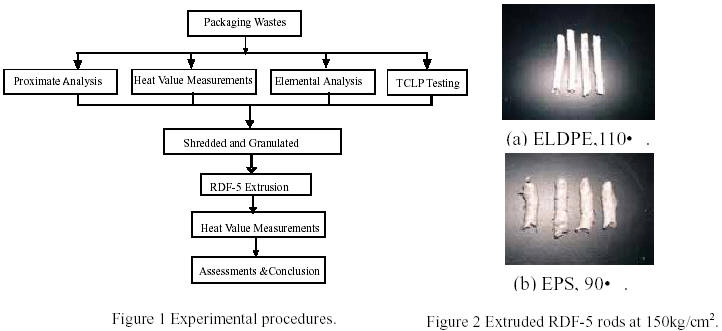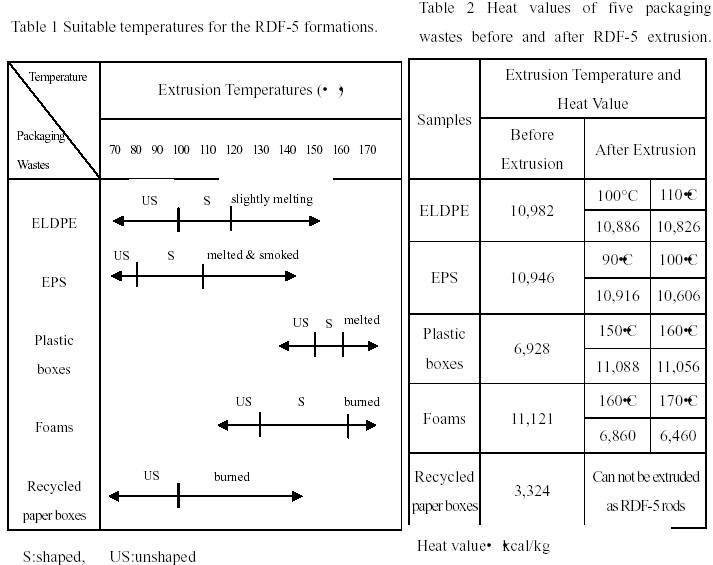Shr-Shiun Lu, Pei-Jiun Tsai, Hua-Shan Tai
Department of Safety, Health and Environmental Engineering
National Kaohsiung First University of Science and Technology
*Corresponding author phone: 886-7-6011540; fax: 886-7-6011061
e-mail: huashan@ccms.nkfust.edu.tw.
2, Juoyue Rd., Nantz District, Kaohsiung 811
ABSTRACTS
A preliminary approach was made in the paper to study the feasibility of RDF-5 made of packaging wastes. Five representative packaging wastes, including extended polyethylene (ELDPE) extended polystyrene (EPS), plastic boxes, recycled paper boxes, and foams were collected from Tainan science-based industrial park, Taiwan. The experimental procedures were shown in Figure 1. Proximate analysis shows that there are low water and ash content (<1%), high volatiled components and fixed carbon (>99%) in the packaging wastes except recycled paper boxes. In the heat value measurements, recycled paper boxes has 3,300 kcal/kg, the others are ranged from 6,900~11,000 kcal/kg. Except recycled paper boxes, carbon and hydrogen are the major components in other four packaging wastes. Elemental analysis also reveals that all five packaging wastes doesn’t contain sulfur. Thus, it may be deduced that most of the by-products would be H2O and CO2 if RDF-5 can be burned completely [1]. However, foams had higher nitrogen content (7.52%), it may cause NOx pollution after burning of RDF-5 [1,2]. Five metals (Zn, Cu, Cd, Pb, Cr ) were measured in TCLP testing. It shows that leaching concentrations of five metals in the packing wastes are all under the standards [3].Five packaging wastes were then broken into small pieces and extruded into RDF-5 rods under fixed pressure of 150kg/cm2 and different temperatures (table 1). Examples of shaped RDF-5 are shown as Figure 2. Recycled paper boxes can not be extruded into RDF-5. Heat value comparisons were then made between RDF-5 and raw materials(table 2). It was found that RDF-5 would carbonized at high temperatures and high pressure and resulted in slightly loss of the volatile heat value [2]. However, this finding doesn’t affect the high potential of these five packaging wastes to make RDF-5. Keywords: packaging waste, RDF, resource recovery, renewable energy.

